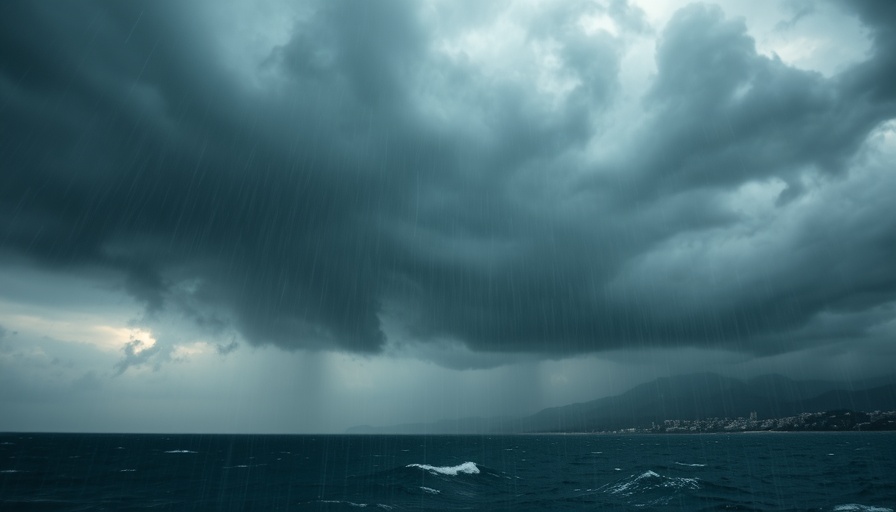
Understanding Hurricane Gabrielle's Rapid Development
Tropical Storm Gabrielle has made headlines as it intensifies into a Category 1 hurricane, situated southeast of Bermuda. With sustained winds reaching 75 mph, this storm showcases the unpredictable dynamics of hurricanes as they form over the Atlantic. Meteorologists are currently predicting that Gabrielle could undergo rapid intensification, which often results in hurricanes becoming major storms in a very short span of time.
Implications for Bermuda and the Eastern Seaboard
Bermuda is currently feeling the effects of Gabrielle, with large ocean swells impacting the island. As the storm is projected to pass east of Bermuda, interest in its progress has heightened. Coastal communities along the Eastern Seaboard—stretching from North Carolina up into Atlantic Canada—should remain vigilant as the storm's swells are expected to reach their shores. This aspect of Gabrielle is particularly concerning for coastal residents and local governments focused on emergency preparedness and public safety.
What Drives Hurricane Intensification?
The phenomenon of hurricane intensification is a topic of great interest within meteorological circles. Factors such as ocean temperature, atmospheric conditions, and wind shear play significant roles in a storm's ability to strengthen. Researchers emphasize the significance of warmer ocean waters, which serve as fuel for storm systems, and this trend has been linked to broader climate change patterns. As Gabrielle intensifies, it becomes crucial to monitor these environmental triggers that are shaping its trajectory.
Similar Storms and Historical Context
Hurricanes emerging in the Atlantic during this time of year are not uncommon. In fact, historical data shows that September is peak hurricane season in the tropics. Storms such as Hurricane Dorian and Florence have previously demonstrated how quickly a tropical storm can escalate into a major threat. By looking at past storms, meteorologists can improve predictive models and strengthen preparedness efforts across regions that may be affected.
The Broader Impact: Trends In Hurricane Reporting
As storms like Gabrielle become a part of trending news today, it is essential to consider how the media landscape covers these events. Increasingly, social media platforms are becoming essential in disseminating real-time updates and safety information. The ways in which disaster-related news trends on platforms like Twitter and Google can enhance public awareness and foster community responses to storms. Thus, understanding the impact of Gabrielle not only has meteorological implications but also social and cultural ones.
Practical Safety Insights for Coastal Residents
For residents along the Eastern Seaboard and Bermuda, understanding how to respond to hurricane threats is crucial. Here are some actionable insights:
- Stay Informed: Regularly check forecasts from reliable sources like the National Hurricane Center, especially as the storm changes path.
- Prepare and Plan: Have an emergency kit ready with essentials, including food, water, and communication devices.
- Follow Local Authorities: Adhere to evacuation orders and safety guidelines issued by local officials.
Explore the Changing Climate and Its Impact on Storm Patterns
The rising frequency and intensity of hurricanes can often be tied back to climate change. As average sea temperatures increase, storms are not just becoming more frequent but also more powerful. Understanding this growing trend is vital for those living in hurricane-prone areas, allowing for informed decisions regarding safety and preparedness in the face of inevitable storms.
Stay Ahead of the Curve: Engage with Trending News
Understanding the dynamics of storms like Gabrielle is just one part of the broader challenge we face with extreme weather. As the storm’s path and intensity continue to make headlines, it’s essential to keep engaging with trending news on social media, stay alert for updates, and share safety information with your community. Keeping this knowledge at the forefront prepares everyone for a safer hurricane season.
 Add Row
Add Row  Add
Add 




Write A Comment